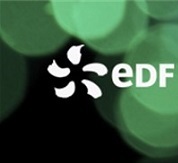Policy interactions between European directives and the French white certificate scheme or how to give the right signal to the residential refurbishment market
Résumé
Recent European energy policies like the Energy Efficiency Directive (EED) and the EcoDesign Directive (EDD) set new targets to increase energy efficiency. Article 7 of EED implies that EU Member States set up energy savings amounting to 1.5 % of the annual energy sales to final customers from 2014 to 2020. To comply with this requirement the level of French White Certificate (WC) obligation should double in the next period. Moreover, the EDD directive sets the minimum energy efficiency level only for a limited number of equipment such as boilers, heat pumps and water heater. In this regard, the WC scheme deemed savings must be revised in order to comply with the European calculation rules of EED's Annex 5. Certain adjustments must be made to the French WC which has been enforced since 2006 and is entering its third period (2015-2017) to be in tune with these directives. Thus, the WC scheme undergoes a revision of unitary savings differentiating between devices already covered by EDD (e.g. boilers) and appliances which are not (e.g. windows). The outcome is a blend of different references (stock, market) and savings (total, marginal) depending on the considered unitary action. Consequences could be a lack of clarity especially for non-specialists of energy policy. This paper addresses the question of a possible conflict of interests between the European system, allocating savings by directive, and the overall customer savings. Scenarios embedded impacts of the new European rules on the WC market are quantified in order to answer the question: will the third period of WC give a positive signal to the refurbishment market? The overall revising process of the third period of WC and its consequences will be presented concerning the building sector. More precisely, calculations to quantify impacts on unitary action savings, on WC costs and on the retrofitting market structure are detailed. Finally, suggestions are proposed that enable both the enhancement of energy efficiency at the European level as well as the sustaining of the dynamics of the French WC market by providing clear and explicit information.
| Origine | Fichiers éditeurs autorisés sur une archive ouverte |
|---|
Loading...

